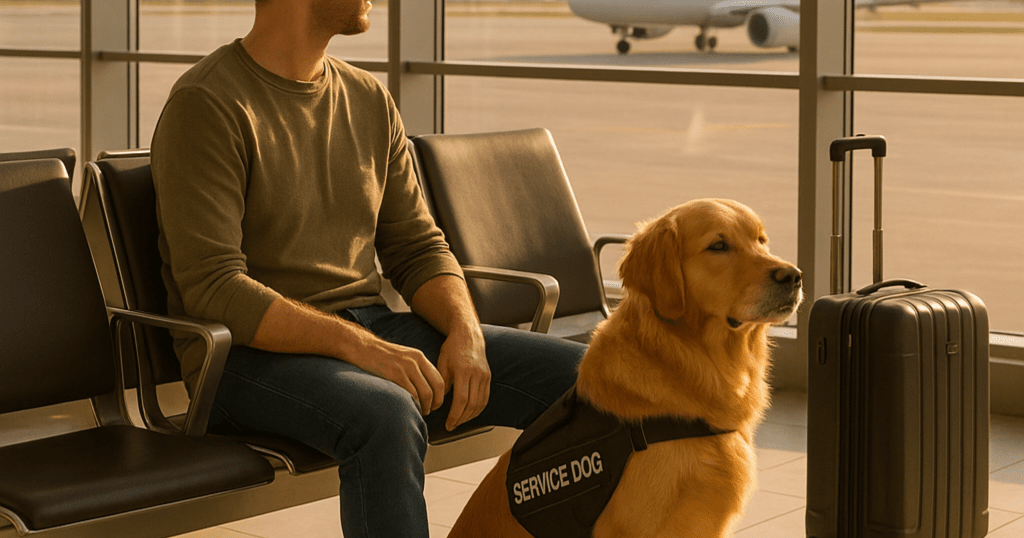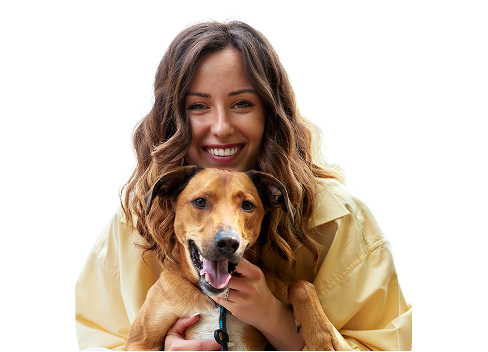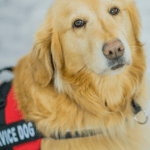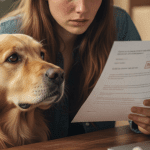Can You Fly With an Emotional Support Animal or Service Dog?
Flying with an animal for emotional or medical support involves strict distinctions. Service dogs are federally protected under the Air Carrier Access Act (ACAA) and must be accommodated by all U.S. airlines in the cabin. Emotional Support Animals (ESAs), on the other hand, are no longer granted the same privileges. Since 2021, most airlines treat ESAs as regular pets, which means they may require a carrier, additional fees, and do not qualify for guaranteed in-cabin access.
If you’re traveling with either, it’s crucial to know your rights, the airline’s responsibilities, and the documentation required to avoid denied boarding or unexpected costs.
Key Takeaways
- Service dogs are legally protected under the ACAA and ADA, allowing them to fly in-cabin free of charge if trained to perform disability-related tasks.
- Emotional Support Animals (ESAs) are no longer recognized as service animals by U.S. airlines and must travel under standard pet policies with fees and restrictions.
- Psychiatric Service Dogs (PSDs) qualify for legal protection if they’re task-trained, making them eligible for in-cabin travel without pet fees.
- Airlines can deny boarding if an animal is disruptive, lacks proper documentation, or cannot safely fit within the cabin space—even if it’s a service dog.
- International travel rules vary widely, and most foreign airlines and countries do not accept ESAs; always confirm requirements well in advance.
Understanding the Legal Difference: ESA vs. Service Dog

The Department of Transportation (DOT) defines these animals differently, and airlines follow those definitions closely.
Service Dogs
- Individually trained to perform tasks for a person with a disability
- Protected under the ADA and ACAA
- Must be allowed in the cabin
- Airlines cannot deny them based on breed or size if they fit in the foot space
Emotional Support Animals (ESAs)
- Provide emotional comfort but are not task-trained
- No longer recognized as service animals by U.S. airlines
- Treated as pets subject to airline-specific pet policies and fees
- Not guaranteed cabin access
Only dogs trained to perform specific disability-related tasks qualify as service animals. ESAs, while emotionally beneficial, no longer receive special treatment under federal air travel law.
Which Airlines Still Accept ESAs?
As of 2025, the majority of U.S.-based airlines no longer accommodate ESAs as service animals. They require passengers to pay pet travel fees and comply with standard pet carrier rules. However, a few international or charter airlines may still allow ESAs on select routes.
Most U.S. airlines do NOT allow ESAs to fly as service animals:
- American Airlines
- Delta Air Lines
- United Airlines
- Southwest Airlines
- Alaska Airlines
Airlines that MAY allow ESAs under specific circumstances:
- LATAM Airlines (select international routes)
- Lufthansa (subject to country regulations and documentation)
- Volaris (Mexico-based; requires advance approval)
- JSX (semi-private airline with more flexible pet policy)
Before booking, always check the airline’s ESA policy and prepare to travel under pet rules if your animal does not qualify as a service dog.
Airline Requirements for Service Dogs
Airlines must follow DOT guidelines to accommodate passengers with service dogs. This includes:
- In-cabin seating: Service dogs must be permitted to sit at your feet or under the seat in front of you. Bulkhead seating must be offered when requested.
- Relief areas: Airlines are required to provide animal relief areas in terminals and assist passengers with locating them.
- No breed restrictions: Airlines may not discriminate based on breed, even for larger dogs like pit bulls or mastiffs.
- No fees: Passengers with qualified service dogs cannot be charged pet-related fees.
- Behavior expectations: Dogs must remain leashed or tethered, well-behaved, and not obstruct cabin movement or pose a threat.
Failure to meet these standards can result in denied boarding, so make sure your dog is trained for public access and remains calm throughout the flight.
What Are Your Responsibilities as a Passenger?
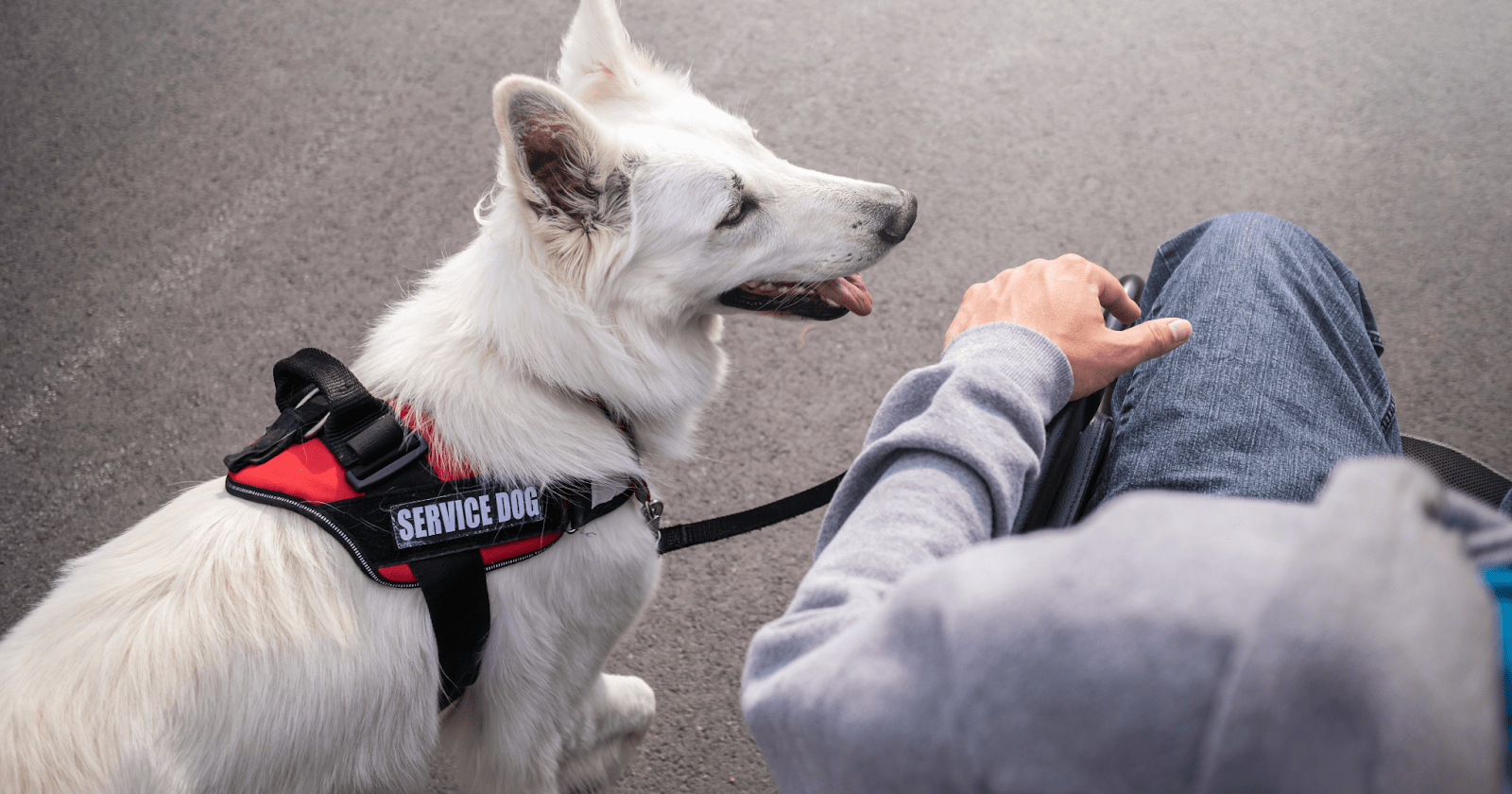
Whether you’re flying with a service dog or hoping to bring an ESA under pet policies, the airline may require documentation, advance notice, and strict compliance with behavior and containment rules.
For Service Dogs:
- Documentation: Airlines may request the DOT Service Animal Air Transportation Form, which verifies that your dog is trained, healthy, and well-behaved. Some carriers also require a relief attestation form for flights longer than 8 hours.
- Behavior: Your dog must remain under control, non-aggressive, and not disrupt cabin operations. Barking, lunging, or relieving itself in the cabin may disqualify your dog from flying.
- Harness or Leash: Service dogs must be harnessed, tethered, or leashed at all times during the flight.
- Fit in Cabin Space: The dog must fit at your feet, under the seat, or in your lap (if under 25 lbs). A separate seat cannot be reserved for the animal.
For ESAs:
- Pet Rules Apply: If your ESA is not a trained service dog, you’ll need to comply with your airline’s pet travel policies. This may include size restrictions, pet carrier requirements, and additional fees.
- Advance Notice: Some airlines require notice 48 hours prior to travel, even for pet reservations, especially on international flights.
ESA vs Psychiatric Service Dog: Know the Legal Difference
This distinction is where confusion often arises. Psychiatric Service Dogs (PSDs) are recognized as service animals under the ADA and ACAA. They are task-trained to assist with mental health disabilities such as PTSD, anxiety disorders, or panic attacks.
Psychiatric Service Dogs (PSDs):
- Must be trained to perform specific tasks (e.g., interrupting self-harm, alerting during a panic attack)
- Qualify for in-cabin travel with no pet fees
- Require the DOT form to fly under service dog status
Emotional Support Animals (ESAs):
- Provide comfort through companionship but are not task-trained
- No longer qualify for in-cabin access on most airlines
- Must fly under pet policies, often with restrictions and added fees
If your dog performs psychiatric tasks and you have supporting documentation, it may qualify as a PSA and receive full legal protection while flying.
Can Unusual Animals Fly as ESAs or Service Animals?
Airlines are not required to accept unusual or exotic animals in the cabin, even with documentation. Animals like snakes, birds, ferrets, or rodents are almost always denied.
Common ESA restrictions include:
- Species limits: Most airlines allow only dogs and cats in cabin. Others are banned for safety and allergy reasons.
- Size restrictions: Even if task-trained, your animal must fit within the foot space or under a seat. Very large dogs may require special approval or may not be permitted.
Notable cases (like a Great Dane on a flight or a parrot ESA being denied) have led to more rigid enforcement and media attention. When in doubt, contact the airline directly before booking.
Flying Internationally with Your ESA or Service Dog
Traveling internationally adds another layer of complexity. While U.S. airlines must comply with the Air Carrier Access Act (ACAA) and ADA regulations for service dogs, foreign carriers and destination countries may have stricter or entirely different rules.
Things to Know Before Flying Abroad:
- Check the destination’s entry requirements: Some countries may require quarantine, advanced veterinary health checks, or certification from an international assistance dog organization (such as IGDF or ADI).
- ESAs are rarely accepted: Most international carriers and countries do not recognize emotional support animals at all.
- Psychiatric service dogs may still qualify, but documentation must be translated and prepared in advance.
- Example: The EU Pet Travel Scheme and UK post-Brexit restrictions have blocked many assistance animals not registered under specific international standards.
Always:
- Contact the airline directly
- Speak with your destination’s customs authority
- Obtain proper veterinary and rabies documentation well in advance
Travel Preparation Checklist
Use this quick checklist to avoid delays or denials at the airport:
✅ Confirm whether your animal qualifies as a service dog or ESA
✅ Submit any required DOT or attestation forms (for service dogs)
✅ For ESAs, book them as pets and ensure they meet carrier rules
✅ Train for public behavior: Your animal must remain calm, quiet, and leashed
✅ Pack essentials: leash, harness, collapsible water bowl, absorbent pads, calming tools
✅ Check with both departure and destination airlines for updated policies
✅ Allow extra time at check-in and prepare to answer airline staff questions politely
The Bottom Line on Flying with Support Animals
Traveling with a service dog or ESA isn’t as simple as showing up at the airport—it takes preparation, the right documentation, and a clear understanding of airline rules. ESAs no longer have guaranteed in-cabin access, so if your dog isn’t task-trained as a psychiatric service animal, expect to follow pet travel policies. For those with trained service animals, submitting the proper forms in advance can make the process much smoother.
Tip: Airline disability assistance lines are often more helpful than general customer service when it comes to questions about support animals.
At Emma & Buddy, we’re here to support your emotional wellness journey from the start. Through licensed ESA consultations and legitimate letters, we help you take the first step toward feeling more secure, supported, and connected—whether you’re navigating everyday challenges or preparing for life’s bigger moments.
Frequently Asked Questions (FAQ)
Can I fly for free with an emotional support animal?
No. ESAs are now treated as pets by most airlines and do not qualify for free travel. Only trained service dogs fly for free.
What documentation do I need for my service dog?
You’ll typically need the DOT Service Animal Air Transportation Form. Some flights over 8 hours require a relief attestation form as well.
Can any dog be a service dog?
Only dogs trained to perform disability-related tasks qualify. Simply being well-behaved or emotionally supportive does not make a dog a service animal under federal law.
Can my ESA be a cat, rabbit, or bird?
Maybe, but not likely. Most airlines only accept dogs and cats as in-cabin pets. Exotic animals are almost always rejected.
Can I be denied boarding even with documentation?
Yes, if the animal is too large to fit safely, is disruptive, or appears to pose a health or safety risk, airlines can legally deny boarding.

